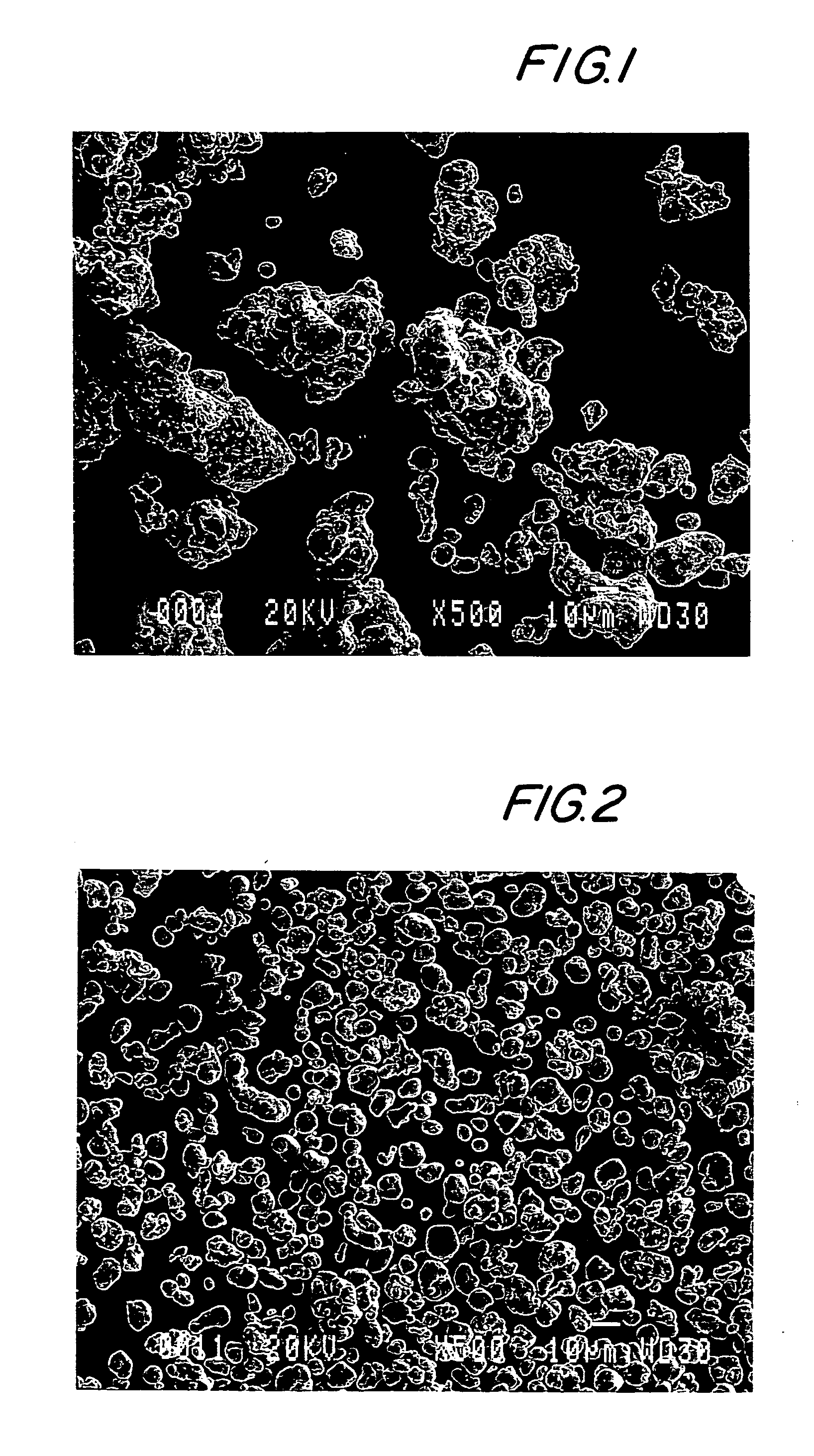Irregular shaped copper particles and methods of use
a technology of irregular shape and copper particles, applied in the direction of metal/alloy conductors, conductors, transportation and packaging, etc., can solve the problems of increasing cost, reducing the yield of usable powder, and reducing production costs, so as to improve the conductivity of vehicles, improve the conductivity, and improve the effect of electrical conductivity
- Summary
- Abstract
- Description
- Claims
- Application Information
AI Technical Summary
Benefits of technology
Problems solved by technology
Method used
Image
Examples
example 1
[0048] High purity electrolytic copper was melted under a reducing atmosphere. The molten copper was poured through a nozzle and the melt stream was broken up by high-pressure water jets. The droplets produced froze instantaneously into powder particles. The powder was dried and screened through a U.S. standard 325 mesh (44 μm) screen. The fraction passing through this screen (<44 μm) was heat treated at 800° F. in hydrogen to reduce any copper oxides present on the surface of the powder particles. The reduced powder was chemically treated to prevent excessive re-oxidation.
[0049] Table 1 below shows the particle size distribution of the copper particles of the present invention versus particles sizes of silver coated copper powder. It is convenient to show particle size distribution as cumulative percent particles larger than a measured size. For example, D10 value represents 10% particles that are larger than the size shown for the particular powder. D50...
example 2
[0054] 100 parts of a bisphenol-A based epoxy was mixed with 86 parts of anhydride-based hardener to yield an epoxy / hardener system. In this epoxy / hardener system, copper powder prepared in Example 1 was loaded at 78-80% level by weight. The resulting copper containing adhesive was then stencil printed on a FR-4-type board. The adhesive containing board was then cured at 150° C. over a 10-12 minute period. After the adhesive was cured, the volume resistivity was measured using a four-point probe. The volume resistivity of the copper filled adhesive was 10−2 ohm / cm2. This is comparable to the silver-based conductive adhesive used in microelectronic application.
PUM
| Property | Measurement | Unit |
|---|---|---|
| D50 particle size | aaaaa | aaaaa |
| median D50 particle size | aaaaa | aaaaa |
| median D50 particle size | aaaaa | aaaaa |
Abstract
Description
Claims
Application Information
 Login to View More
Login to View More - R&D
- Intellectual Property
- Life Sciences
- Materials
- Tech Scout
- Unparalleled Data Quality
- Higher Quality Content
- 60% Fewer Hallucinations
Browse by: Latest US Patents, China's latest patents, Technical Efficacy Thesaurus, Application Domain, Technology Topic, Popular Technical Reports.
© 2025 PatSnap. All rights reserved.Legal|Privacy policy|Modern Slavery Act Transparency Statement|Sitemap|About US| Contact US: help@patsnap.com

